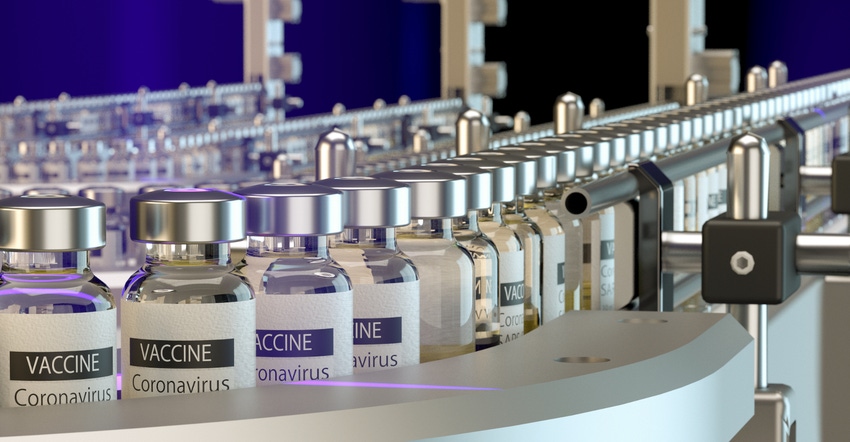It’s Not Too Late for Contract Packagers to Help Vaccine Distribution
Four tips for choosing a serialization solution provider will open new pharmaceutical opportunities when the FDA’s temporary exemptions for COVID-19 vaccines expire.

The global demand for COVID-19 vaccines has prompted companies that have been competitors to develop strategic partnerships and produce and distribute approved vaccines. A recent example includes Pfizer and BioNTech entering into agreements with both Novartis and Sanofi to ramp up vaccine production.
The issuance by the US Food and Drug Administration (FDA) of an emergency use authorization (EUA) exempted manufacturers from having to serialize the product (assigning unique serial numbers to each salable unit of a prescription product) — and enabled supply chain trading partners from having to exchange transaction data. The EUA and its exemptions will not remain in place permanently. Therefore, forward-looking manufacturers — including contract packagers — have begun to mitigate some of the risks they see on the horizon.
New supply chain challenges emerge.
The accelerated rate at which the vaccines have been distributed has created new supply chain challenges including cold chain capacity/storage requirements. Knowing that the EUA will eventually be rescinded, manufacturers have quickly determined that its lack of packaging serialization capacity could become a major bottleneck going forward. The unprecedented volume of vaccines that will continue to move through the supply chain, as well as the virus’s ability to mutate into variants, will require new vaccine formulations. This means manufacturers must be both prolific and nimble.
An additional threat that many feared would arise has been confirmed: Counterfeiters have attempted to introduce ineffective products into the supply chain, most recently in Mexico. Counterfeiters and the threats they pose will not abate; consequently, the FDA’s Drug Quality and Security Act (DSCSA) requirements for vaccines will be reimposed to improve the security of the supply chain and protect patients.
If the vaccines cannot be efficiently serialized to meet the high demand and in accordance with the DSCSA, it will become a single point of failure that will be measured in the loss of human lives and brand reputations.

As with strategic vaccine production partnerships, manufacturers have been reinforcing their supply chains’ resilience by tasking contract packagers to increase serialization capacity. The demand has been so high, some organizations have been scrambling to procure new equipment to increase throughput, only to find themselves on long waiting lists.
Serialization is no longer too costly.
Some contract packaging organizations are missing out on business opportunities because they lack serialization capabilities. Many have been under the misconception that developing an operational serialization solution will take too much time or be too costly. That may have been the case in the past--but not anymore.
Today’s serialization solution providers can offer high-value support and reduce project implementation time. Here are four tips on what to look for when identifying and selecting a serialization solution partner:
1. High level of service and expertise: Seek a partner that has an experienced staff in areas such as assembly engineering and information technology (IT) who can work with your team to design, configure, install, and train your staff on serialization line and cloud solutions.
2. Fully automated solutions: Look for a partner that offers a fully automated system. This will more easily enable you to meet the expected production throughput that vaccine manufacturers will require of their partners.
3. Agnostic technology: Seek a partner who leverages solutions that use off-the-shelf scanners, printers, and vision systems. This will eliminate the technical and financial risks of using proprietary hardware. Systems that integrate with industry-accepted printing systems designed for serialization allow you to reduce the time to implement resulting in lower overall project costs.
4. Financing options: If your company is challenged by the capital expenditure (CapEx) requirements of developing a vaccine-level serialization solution, seek out companies that offer the flexibility to defer those upfront CapEx costs over time to improve the likelihood that your company and the partnership will succeed.
The COVID-19 pandemic is challenging people, governments and companies to find innovative ways to work together. While vaccines continue to be developed and production ramped up, the supply chain that enables needles to reach arms still offers a great deal of opportunity for those who have the vision and desire to contribute to this global effort.
About the Author(s)
You May Also Like




